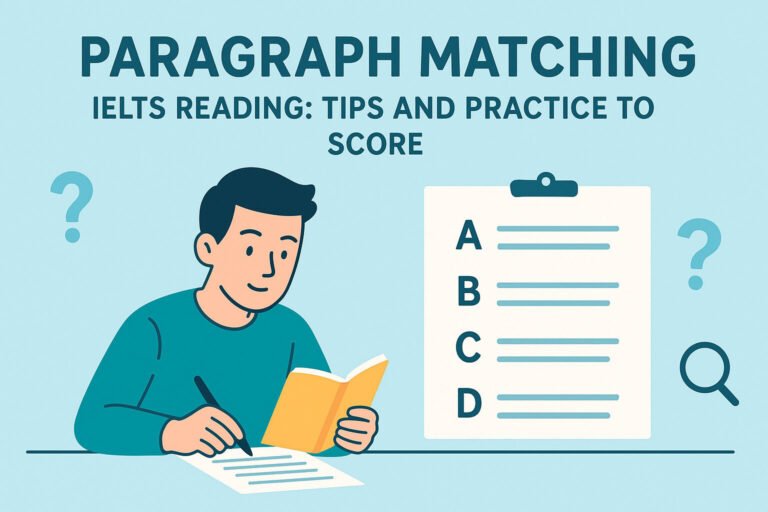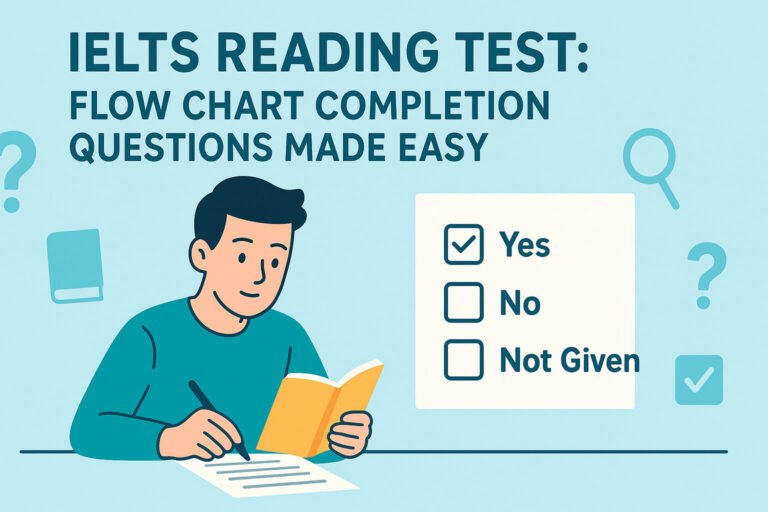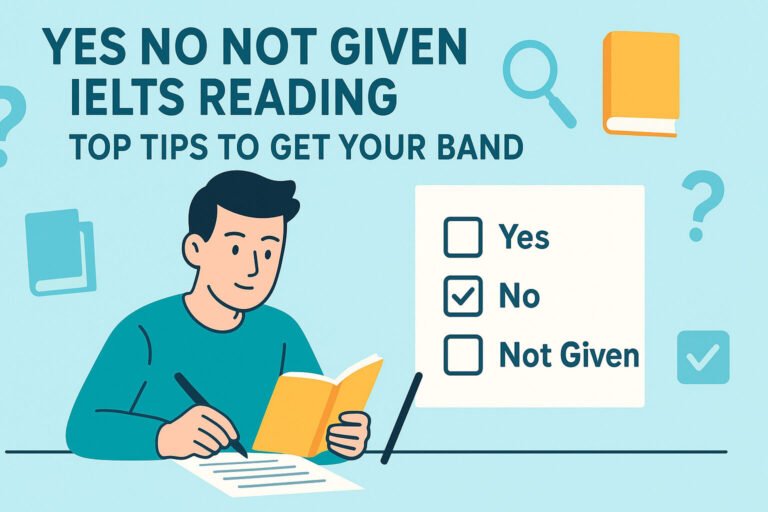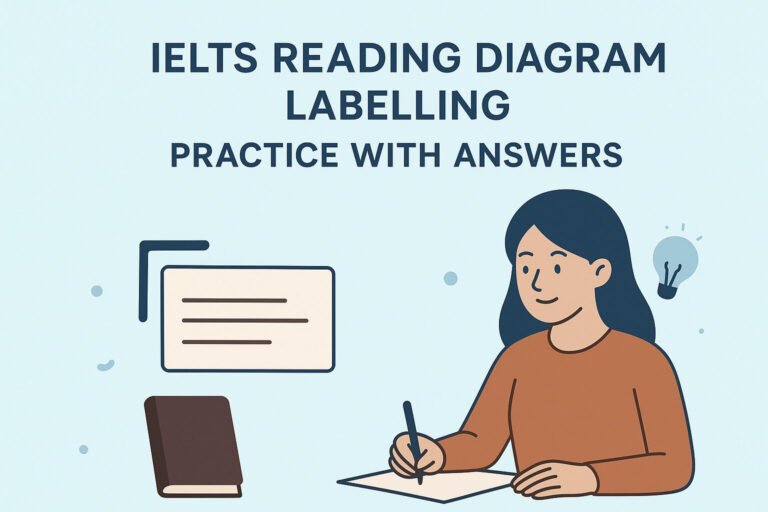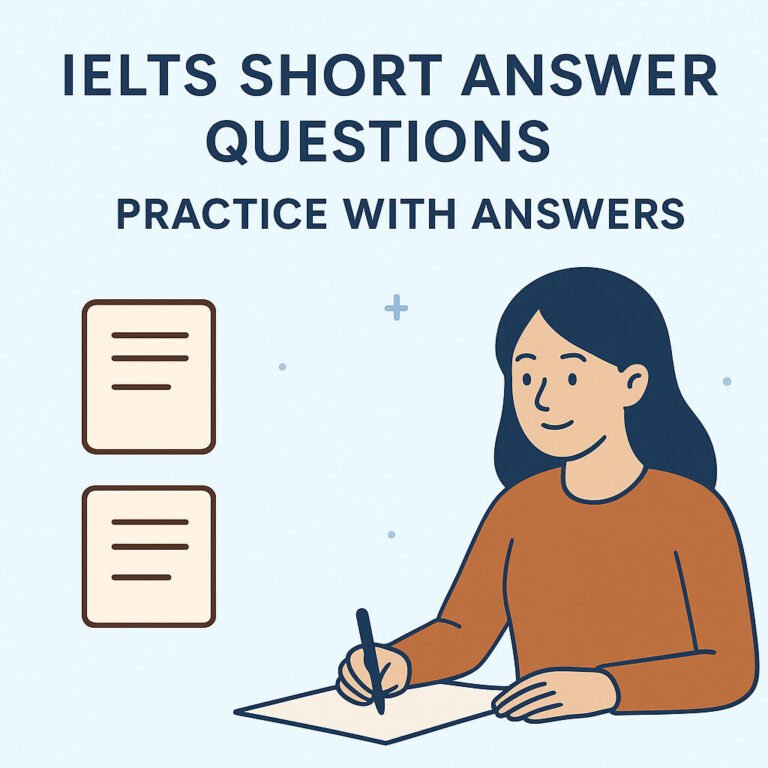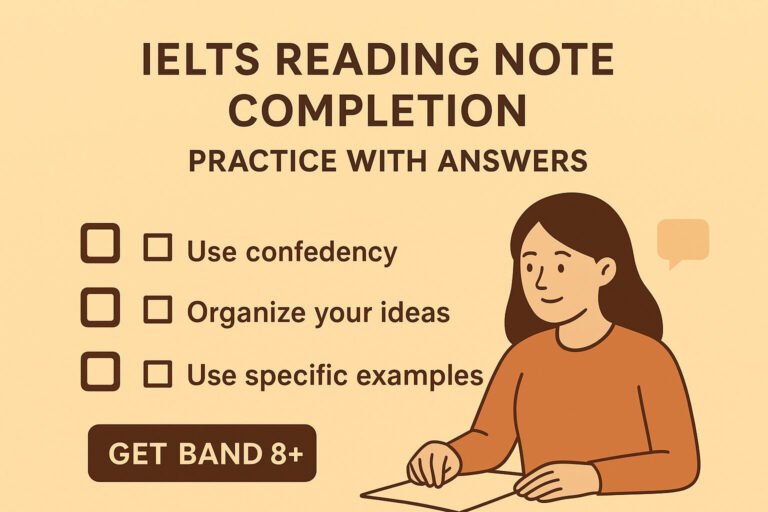Are you staring at a True, False, Not Given question in your IELTS Reading practice, feeling like it’s a puzzle with no solution? Don’t worry—you’re not alone! These questions often trip up even the most prepared IELTS aspirants, especially those aiming for a Band 7 or higher to study abroad. The good news? With the right strategies and practice, you can master True False Not Given IELTS Reading Practice Lessons and boost your score. In this guide, we’ll break down everything you need to know about these tricky questions, share expert tips, and provide practical examples to help you tackle them like a pro. Ready to turn confusion into confidence? Let’s dive in!
Why True, False, Not Given Questions Are So Challenging
True, False, Not Given (TFNG) questions in the IELTS Reading test ask you to determine if a statement matches the information in the passage (True), contradicts it (False), or isn’t mentioned at all (Not Given). Sounds simple, right? But here’s why they’re tough:
Subtle differences: The passage might use synonyms or paraphrasing, making it hard to spot exact matches.
Time pressure: With only 60 minutes for 40 questions, you need to work quickly and accurately.
Not Given traps: Many students confuse “Not Given” with “False,” leading to lost marks.
This blog will equip you with step-by-step strategies, real examples, and practice tips to conquer True False Not Given IELTS Reading Practice Lessons. By the end, you’ll feel ready to face these questions with ease.
TFNG questions test your ability to understand details and avoid traps. With practice, you can master them!
👉 Join Our Telegram Channel to Download IELTS Academic/General PDF and Audios
🎧 Includes all Listening Audios + Speaking Videos + Answer Explanations + Writing Samples.
Understanding True, False, Not Given: The Basics
Before diving into strategies, let’s clarify what each option means:
True: The statement matches the information in the passage, either directly or through paraphrasing.
False: The statement contradicts the information in the passage.
Not Given: The statement is neither confirmed nor contradicted—it’s simply not mentioned.
For example, if the passage says, “The city has two universities,” and the question states, “The city has multiple universities,” the answer is True because “two” implies “multiple.” If the question says, “The city has three universities,” it’s False because it contradicts the passage. If it says, “The universities offer free courses,” and the passage doesn’t mention course fees, it’s Not Given.
Always base your answer on the passage’s content, not assumptions. Look for synonyms and paraphrasing to spot the correct answer.
Step-by-Step Strategy to Solve True, False, Not Given Questions
Here’s a foolproof approach to tackle True False Not Given IELTS Reading Practice Lessons:
Step 1: Skim the Passage First
Don’t jump straight to the questions! Skim the passage (2–3 minutes) to understand the main idea and structure. Pay attention to headings, topic sentences, and keywords. This helps you locate information faster later.
Step 2: Read the Question Carefully
Focus on the statement’s keywords. For example, in “The library was built in 1990,” underline “library,” “built,” and “1990.” This helps you scan the passage efficiently.
Step 3: Scan for Relevant Information
Look for the section of the passage that discusses the topic (e.g., the library). Search for synonyms or related terms, like “constructed” for “built” or “1990s” for “1990.”
Step 4: Compare and Decide
If the statement matches the passage’s information, choose True.
If it contradicts, choose False.
If you can’t find the information (and it’s not implied), choose Not Given.
Step 5: Avoid Overthinking
Don’t assume information that isn’t explicitly stated. For example, if the passage doesn’t mention the library’s opening hours, a statement about them is Not Given, even if it seems plausible.
Example: Passage: “The museum was renovated in 2005 to include a new art gallery.”Question: “The museum’s renovation occurred in the early 2000s.”Answer: True (2005 is in the early 2000s). Question: “The museum added a science exhibit in 2005.”Answer: Not Given (no mention of a science exhibit).
Follow a systematic approach—skim, scan, compare, and decide—to avoid mistakes and save time.
Common Traps and How to Avoid Them
IELTS test makers love setting traps in True False Not Given IELTS Reading Practice Lessons. Here’s how to sidestep them:
Synonym Traps: The passage might say “expanded” instead of “grew.” Always look for synonyms.
Partial Information: A statement might be half-true but contain an incorrect detail, making it False. For example, “The park was opened in 2010 and hosts free concerts” is False if the passage only mentions the opening date.
Not Given Confusion: If a statement feels logical but isn’t in the passage, it’s Not Given. Don’t let your assumptions trick you.
Pro Tip: Highlight or underline keywords in the passage and questions during practice to train your brain to spot matches and mismatches.
Stay alert for synonyms, partial truths, and missing information to avoid falling into IELTS traps.
Practice Exercise: True, False, Not Given
Let’s put your skills to the test with a sample passage and questions. Read the passage below and answer the questions.
Passage: The town of Greenhill has a population of 15,000. It is known for its annual flower festival, which attracts thousands of visitors. The festival began in 1995 and is held every June. The town also has a small library that was built in 2000.
Questions:
Greenhill’s population exceeds 20,000.
The flower festival started in the 1990s.
The library offers free Wi-Fi to visitors.
Answers:
False (The passage says the population is 15,000, not over 20,000).
True (The festival began in 1995, which is in the 1990s).
Not Given (No information about Wi-Fi is provided).
Practice Tip: Try more IELTS Reading True False Not Given Exercises on IELTS Nest’s practice page to build confidence.
Practice with real examples to sharpen your skills and get comfortable with TFNG questions.
Table: Quick Reference for True, False, Not Given
Option | Definition | Example Statement | Passage Information | Answer |
|---|---|---|---|---|
True | Matches the passage (direct or paraphrased) | “The park opened in 2010.” | “The park was established in 2010.” | True |
False | Contradicts the passage | “The park opened in 2015.” | “The park was established in 2010.” | False |
Not Given | Not mentioned in the passage | “The park has a playground.” | No mention of a playground. | Not Given |
Use this table as a quick guide to check your understanding while practicing.
Top 5 Tips to Excel in True, False, Not Given Questions
Here are five practical tips to boost your performance in True False Not Given IELTS Reading Practice Lessons:
Build Vocabulary: Learn synonyms and paraphrasing techniques. For example, “constructed” might appear as “built” or “erected.”
Practice Skimming and Scanning: Skim for the main idea, then scan for specific details to save time.
Time Yourself: Aim to answer TFNG questions in 1–2 minutes each during practice to mimic test conditions.
Use Official Resources: Practice with authentic materials from Cambridge IELTS to get familiar with real test formats.
Review Mistakes: After practice, analyze wrong answers to understand where you went off track.
Consistent practice with these tips will help you tackle TFNG questions faster and more accurately.
FAQ: True, False, Not Given Questions
What’s the difference between False and Not Given?
False means the statement contradicts the passage. Not Given means the information isn’t mentioned at all. For example, if the passage doesn’t mention a topic, don’t assume it’s false—choose Not Given.
How can I improve my speed in TFNG questions?
Practice skimming and scanning techniques. Time yourself during IELTS Reading True False Not Given Exercises to build speed without sacrificing accuracy.
Are TFNG questions the same in Academic and General Training?
Yes, both modules include TFNG questions, but Academic passages are often more formal, while General Training passages may include everyday topics like advertisements.
How do I avoid Not Given traps?
Stick strictly to the passage’s content. If a statement seems plausible but isn’t explicitly mentioned, it’s Not Given.
Can I guess if I’m unsure?
It’s better to make an educated guess than leave a question blank, as there’s no penalty for wrong answers in IELTS.
Where can I find more TFNG practice?
Check out IELTS Reading True False Not Given Exercises on IELTS Nest or official Cambridge IELTS books for authentic practice.
These FAQs address common concerns and help you prepare more effectively.
Conclusion: Master True, False, Not Given with Confidence
Mastering True False Not Given IELTS Reading Practice Lessons is all about understanding the question type, using a clear strategy, and practicing regularly. By skimming passages, scanning for keywords, and avoiding traps like synonyms or assumptions, you can boost your accuracy and speed. With the tips, examples, and practice exercises in this guide, you’re well on your way to acing these questions and achieving your dream IELTS score.
Ready to take your IELTS Reading skills to the next level? Start practicing with our IELTS Reading True False Not Given Exercises on IELTS Nest today, and watch your confidence soar!


